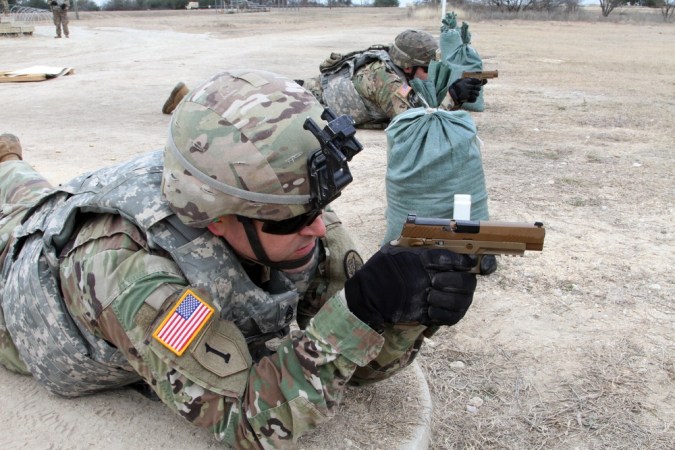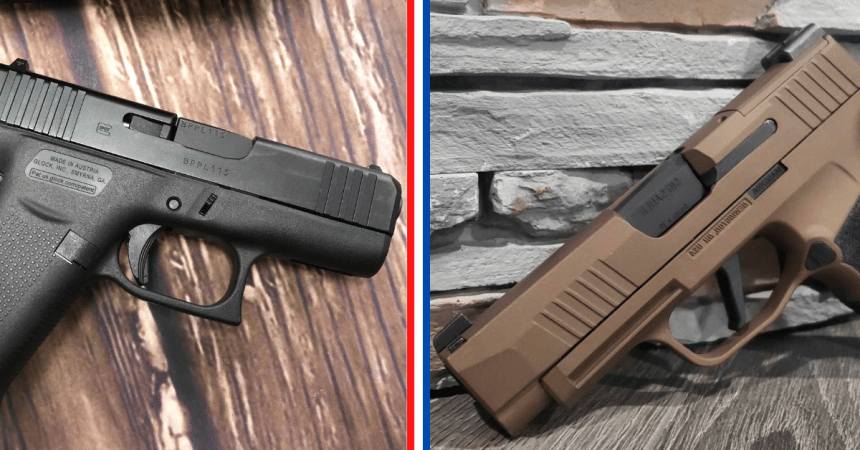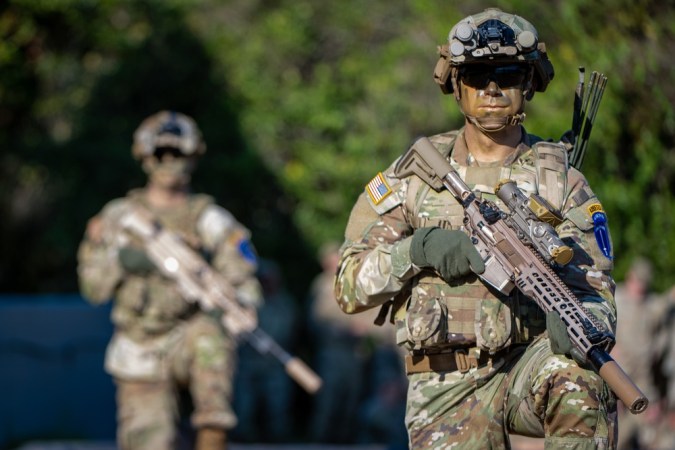Following the adoption of the M17/M18 pistols, the XM7 carbine and the XM250 light machine gun, SIG became a premiere manufacturer of U.S. military small arms. The M17/M18 is in the process of replacing the M9 manufactured by Beretta while the XM7 and XM250 were selected under the Next Generation Squad Weapon program to replace the M4 carbine and M249 machine gun made by FN. However, concerns in and out of the courtroom raise questions about SIG Sauer’s XM7 replacing the M4.

Starting with the M17/M18, the SIG P320 on which the military pistols are based, is the subject of dozens of lawsuits filed since 2018. At the core of these lawsuits is the allegation that the P320 is capable of uncommanded firing as the result of a faulty design. Two of these cases, both involving law enforcement officers and department-issued P320s, were settled out of court. However, on June 20, 2024, a Georgia federal jury awarded over $2.35 million to Robert Lang who sued SIG Sauer after he was shot in the thigh while unholstering his P320. “Before he could even lift the gun off of his belt, the weapon discharged,” according to the claim by Lang’s legal representative. SIG Sauer issued a statement saying that it will appeal the ruling, stating, “Sig Sauer does not believe that the plaintiff has met his burden to prove the P320 model pistol was designed defectively or negligently as claimed. There are no facts on the record to support that Mr. Lang’s discharge claim was the result of anything other than his own negligent handling causing him to pull the trigger on the P320 pistol.” In court records, Lang is described as a lifelong gun enthusiast with “hundreds of hours behind the trigger.”

In 2017, the same year that the P320 was adopted by the Army, videos surfaced on the internet of the P320 firing when dropped at certain angles. Although SIG Sauer maintained that the weapon was not faulty, the company did enact a voluntary upgrade program to change hardware in the pistol’s trigger and striker. The military M17/M18, which features a thumb safety, was not recalled. However, military production M17/M18 pistols were released to the civilian market after testing and evaluation by the Army. This could be seen as an unusual move given that a government supplier would be pressed to fulfill contract orders within an agreed timeframe.

The next legal issue for SIG Sauer involves machine guns. On April 9, 2024, True Velocity and LoneStar Future Weapons filed a complaint against SIG Sauer in Vermont Superior Court. The complaint alleges that SIG “brazenly and wrongfully misappropriated Plaintiff’s trade secrets to obtain an unfair competitive advantage.” To compete for the NGSW contract, LoneStar first collaborated with General Dynamics Ordnance and Tactical Systems who provided its machine gun technical data to LoneStar. LoneStar later took over as the primary contractor and teamed up with True Velocity.

Over nearly two decades, GD-OTS developed proprietary machine gun technology at its Vermont facilities that went into its Lightweight Medium Machine Gun. The complaint notes that at the core of the LWMMG is a “revolutionary mitigation system called Short Recoil Impulse Averaging (SRIA).” SRIA allows a weapon system to fire a more powerful cartridge like .338 Norma Magnum without increasing its weight or size. True Velocity and LoneStar allege that SIG Sauer acquired this proprietary technology by “aggressively recruiting GD-OTS employees who had spent years designing and developing these technologies and obtaining crucial and highly confidential design data.”

Beginning in the Fall of 2013, SIG Sauer hired three notable GD-OTS engineers including David Steimke. A 19-year employee of General Dynamics, Steimke was the senior principal design engineer at one of the Vermont facilities. According to the complaint, he also worked on “nearly every belt-fed machine gun design at GD-OTS.” Steimke was the original designer for the LWMMG and is now the chief engineer at SIG Sauer.

Steimke maintains that he did not divulge proprietary information to SIG. “According to Mr. Steimke’s representations, Sig was able to design and manufacture a competing .338 belt-fed machine gun in less than [18] months when it took GD-OTS more than a decade to develop and mature its impulse averaging and [Lightweight Medium Machine Gun] technology,” the court filing notes. Although SIG Sauer was awarded the NGSW contract which included its XM250 LMG, SIG Sauer and True Velocity are currently competing for a Special Operations contract for a .338-caliber medium machine gun.

In addition to domestic legal issues, the SIG NGSW contract faces an international challenge: NATO. The XM7 and XM250 are both chambered in a 6.8x51mm cartridge. This new round is not standardized by NATO or produced outside of the U.S. A key advantage of NATO is that the militaries of member nations can share ammunition. While this presents an issue for mass adoption of the NGSW systems, it is possible that the XM7 and XM250 will replace the M4 and M249 specifically for frontline soldiers and special operations units. “The big idea behind this weapon is for close-combat forces,” Steve Prewitt, a Project Manager at U.S. Army Test and Evaluation Command, said in an Army article. “It’s a capability gap-filler for infantry and special forces, not necessarily an M4 replacement. It gives them a different tool.” This small-scale adoption of a non-NATO caliber happened recently with the .300 Blackout cartridge being adopted by USSOCOM in the SIG Sauer Rattler PDW.










